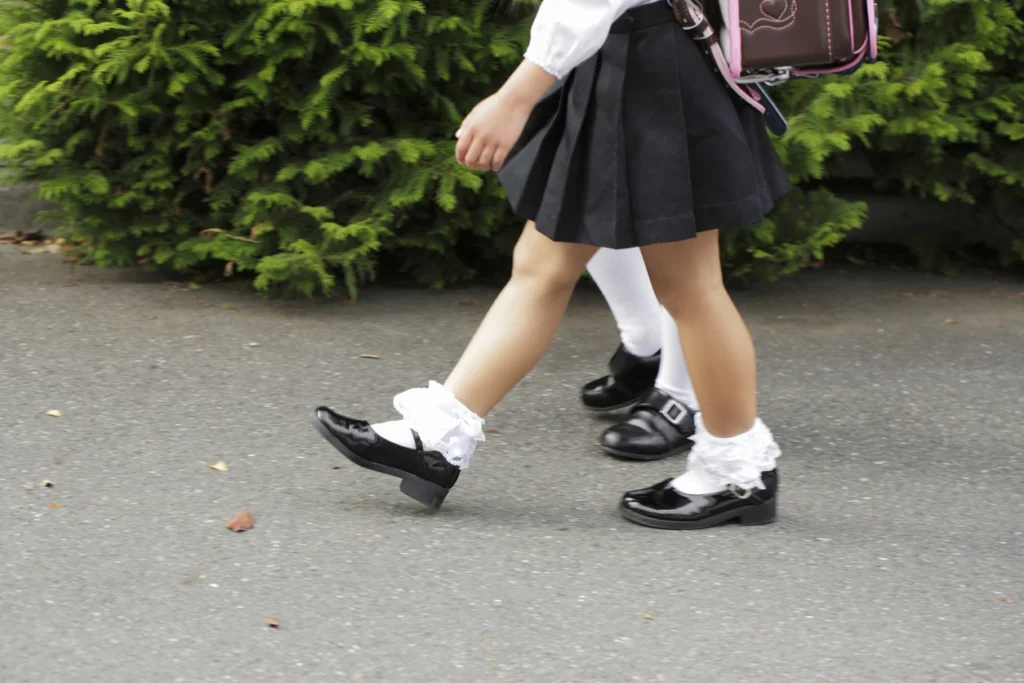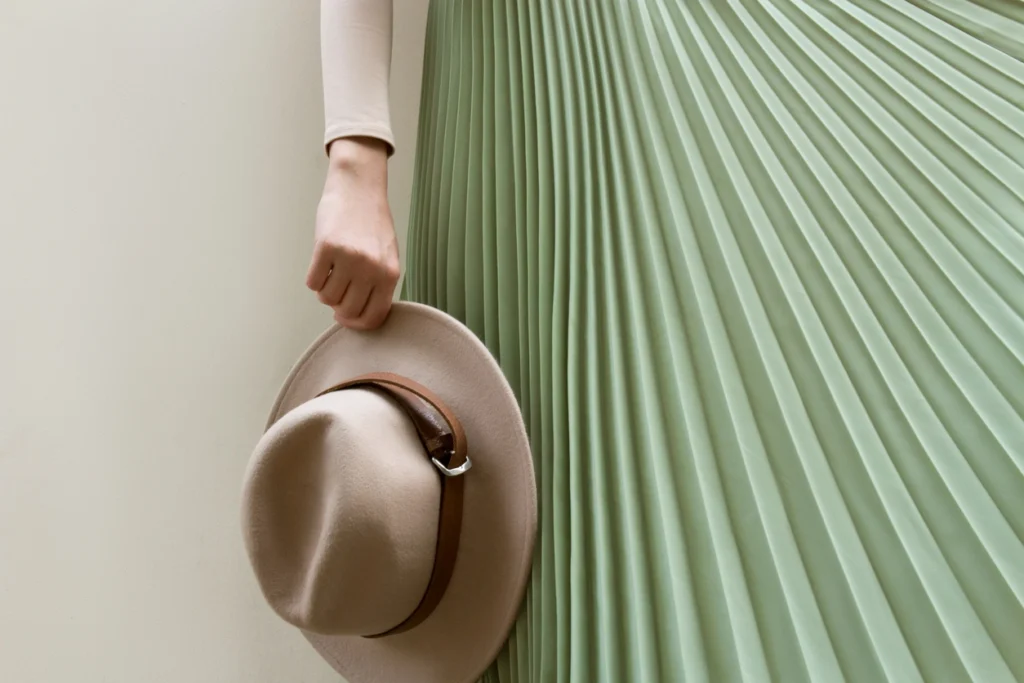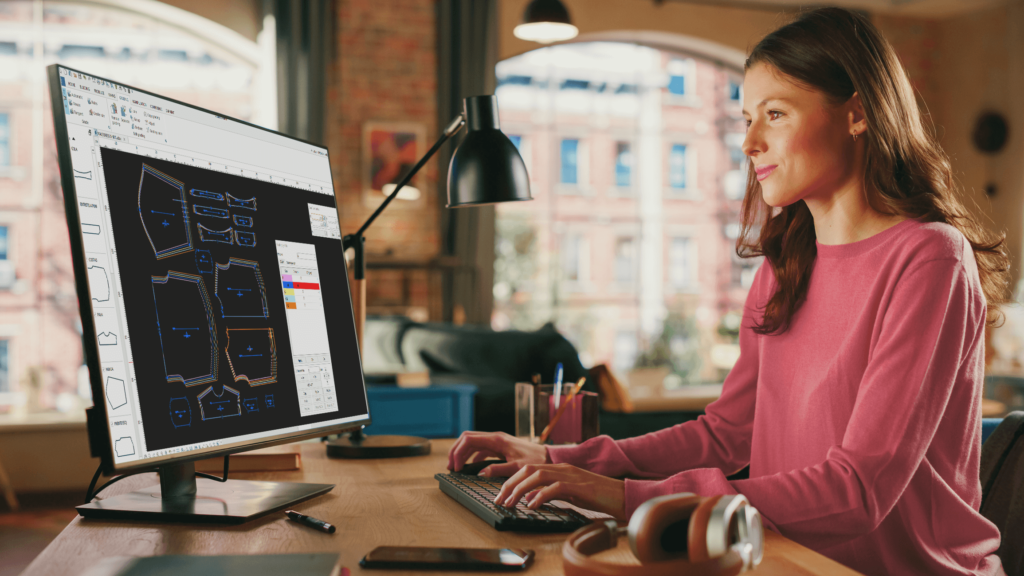Summary
- Learning about pleats is not just about style. It’s also about the garment’s purpose and function.
- Understanding their use can improve your workflow, as some types of pleats can present challenges in pattern making.
- Experience the future of fashion development with Audaces360 solutions. Sign up for your free trial today!
Pleats are a timeless detail in fashion design. They add texture, movement, and structure to clothing. Whether you’re developing casual wear or elegant evening pieces, pleats can elevate any garment.
From simple folds to intricate patterns, pleats come in many forms. Each type has its own charm and purpose.
In this guide, we’ll explore the most popular types and show you how to incorporate them into your patterns.
Happy reading!
Sumário
How do pleats affect the drape of a garment?
Pleats change how a garment hangs and moves. They give the fabric structure, helping it fall in controlled folds instead of loose, unshaped drapes. It also influences how the fabric moves.
Different pleat styles have different effects. Deep pleats add fullness, while shallow ones create subtle shaping, for example.
Box pleats make fabric spread evenly, giving it a balanced look. Knife pleats, on the other hand, create uniform movement and rhythm.
The type of fabric also affects the result. Stiff fabrics like taffeta make sharp, structured pleats. Soft fabrics like silk allow pleats to flow naturally.
By knowing how pleats interact with fabrics, pattern makers can create garments with the perfect drape.
Learn more: Why simulate the 3D fit of garments before production?
What are pleats?
Pleats are folds in fabric that add volume, shape, and movement to garments.
You can create them by doubling the fabric back on itself and securing it in place. Pleats are common in skirts, dresses, and pants.
Each type of pleat creates a specific effect. Some pleats add fullness, while others provide sleek lines. They can be decorative or functional, helping with fit or enhancing a garment’s style.
Many pleats are designed to maintain their shape, giving garments a polished and structured look.
For pattern makers, pleats are a tool to control fabric flow. They transform flat fabric into dynamic designs.
Knowing the different types of pleats and their uses is essential in clothing production.
Learn more: What is pattern design and how to create it from scratch?
The 4 most common types of pleats in clothing production
Pleats are a popular design feature in clothing. They add texture, shape, and movement to garments.
Whether creating a pleated skirt or tailoring pants, knowing these types is key for a polished design.
1) Simple pleats
Simple pleats are the most basic type. You can create them by folding fabric and stitching it at the top.
This style is ideal for adding volume to a garment without complicating the design. It often appears in pleated skirts and dresses for a soft, flowing look.
These pleats are easy to make and adapt well to many fabrics. For example, wide pleats in stiff fabric give structure, while narrower ones in soft fabric allow for movement.
The secret to perfect pleats lies in determining the right fullness and spacing.
Simple types of pleats can also enhance comfort. Adding a kick pleat at the back of a skirt or dress allows better movement. This functional detail is especially helpful in tighter-fitting garments.
Learn more: Explore the main types of patterns for fashion manufacturing
2) Box pleats

Box pleats are folds that face away from each other, creating a structured, symmetrical look. You can find them in school uniforms, tailored skirts, and jackets.
These pleats add volume evenly across the garment. This makes them ideal for designs that need a balanced shape, like A-line skirts.
They can also enhance movement by allowing the fabric to expand naturally.
Box pleats are best suited for medium to heavy fabrics. These materials hold the structured shape well. Lightweight fabrics can work too, but the pleats may not stay as defined.
In contrast, inverted box pleats are similar but with the folds facing inward, creating a slightly different visual effect.
Learn more: Discover essential techniques on how to draw a skirt online
3) Knife pleats
Knife pleats are folds that all face the same direction. They create a clean, streamlined look and are common in skirts and dresses. These types of pleats give garments a sense of movement and rhythm.
One advantage of knife pleats is their versatility. They work well in both formal and casual designs. Depending on the fabric, they can appear crisp and structured or soft and flowing.
To create knife pleats, pattern makers must calculate the pleat depth and spacing carefully. It ensures the pleats lay flat and maintain their shape.
It’s also important to consider fabric type, as lightweight materials can shift during sewing.
4) Pleating

Pleating is the process of folding fabric to create pleats. It’s both a functional and artistic technique in garment production. Pleats can add texture, volume, or even structure to designs.
The process begins with marking and folding the fabric. Pattern makers must be precise to ensure even pleats.
After folding, secure the pleats by stitching, pressing, or heat-setting, depending on the fabric and design.
You can create pleating during the pattern-making process, or the fabric may already come pre-pleated.
Pre-pleated fabrics are a popular choice for their consistent results and unique effects. Among the most common types of pre-pleated designs are:
- Accordion pleats: narrow, sharp pleats that fold in and out like an accordion. They create a structured yet flexible look and are popular in skirts and dresses.
- Zig-zag pleats: pleats that alternate directions in a zig-zag pattern. They add dynamic texture and a playful element to garments.
- Sunray pleats: pleats that fan out in a circular pattern, starting narrow at the top and widening toward the hem. This style is perfect for achieving dramatic movement in skirts and dresses.
- Crystal pleats: extremely fine, sharp pleats that create a shimmering, delicate effect. They are common in evening wear and lightweight fabrics.
By choosing the right pleating technique, designers and pattern makers can elevate their collections.
Don’t let manual pattern making slow you down. Learn how Audaces technology can streamline your process. Download our whitepaper now!
How to choose the ideal type of pleat for your pieces?
Choosing the right pleat for your design depends on many factors. Let’s break down the process to simplify your workflow:
Understand your target audience and garment purpose
Consider who will wear the garment and when. If the piece is for formal wear, sharp pleats like knife pleats may be best.
For casual or flowy designs, softer types of pleats such as accordion pleats might work better. Always consider the context in which customers will use the garment.
The purpose of the garment also plays a role. For example, if the design needs to provide ease of movement, pleats should be more relaxed.
For a sleek, structured look, more defined pleats may be the right choice.
Interpret the sketch and the information from the tech pack
The sketch provides the first visual direction, but the tech pack holds all the details. Review it carefully to understand the exact pleating requirements.
The tech pack will specify pleat depth, type, and placement, which are essential for creating the desired effect.
Learn more: Learn how to create a collection using digital sketch
Test the pleats on prototypes
Once you’ve chosen your type of pleat, it’s time to test it on a prototype. Start by making a sample garment with the pleats to see how they affect the fit and flow.
Prototypes help visualize how the pleats behave before the final production.
Using virtual prototypes in 3D software can save time and reduce errors. You can simulate how the pleats will look and behave in different fabrics, making adjustments before cutting any fabric.
Learn more: 5 reasons why pattern makers should start using 3D pattern
Evaluate the type of fabric (and how it behaves)
The fabric you choose has a big impact on how the types of pleats look. Stiff fabrics like taffeta hold sharp pleats well, while soft fabrics like silk may need a softer pleat to avoid looking too bulky.
It’s also essential to know how the fabric behaves when pleated. Some fabrics may wrinkle or stretch differently, which can affect the final look of the pleat.
Testing the pleats on a fabric swatch will help ensure they perform as expected.
Learn more: The best types of fabric for your clothing company
How to add pleats to your digital patterns?

In digital pattern-making, you can easily add all types of pleats using dedicated software.
The program allows for precise control over pleat depth, width, and placement. This ensures that your digital pattern matches the original design.
It’s essential to double-check these measurements before proceeding to the next step in the production process.
Create different types of pleats for your patterns with Audaces solutions
From box pleats to knife pleats, our Audaces solutions let you create all types of pleats effortlessly. It’s all just a few clicks away!
Audaces Pattern
For pattern makers looking for excellence, Audaces Pattern is the perfect solution. It ensures the pattern design reaches a new level of efficiency and precision.
With its versatile approach, it’s possible to develop high-quality patterns, regardless of complexity.
Refine every detail to perfection, ensuring that your creative vision translates into patterns. This advanced solution will assist you with all your pattern making endeavors!
Audaces 3D
Audaces 3D is the essential solution for pattern makers to bring creations to life in a 3D mannequin.
You can test your digital pattern before committing to a physical sample. Save time and resources by identifying issues early in the process.
With a range of tools and possibilities, this software transforms the development processes.
It enables you to shape your ideas directly in a digital space, gaining agility and quality in deliveries.
Want to stay up to date on the latest fashion industry news? Subscribe to our newsletter!
FAQ
Pleats change how a garment hangs and moves. They give the fabric structure, helping it fall in controlled folds instead of loose, unshaped drapes.
Pleats are folds in fabric that add volume, shape, and movement to garments. They are common in skirts, dresses, and pants.
The most common types of pleats are simple pleats, box pleats, knife pleats, and pleating.










